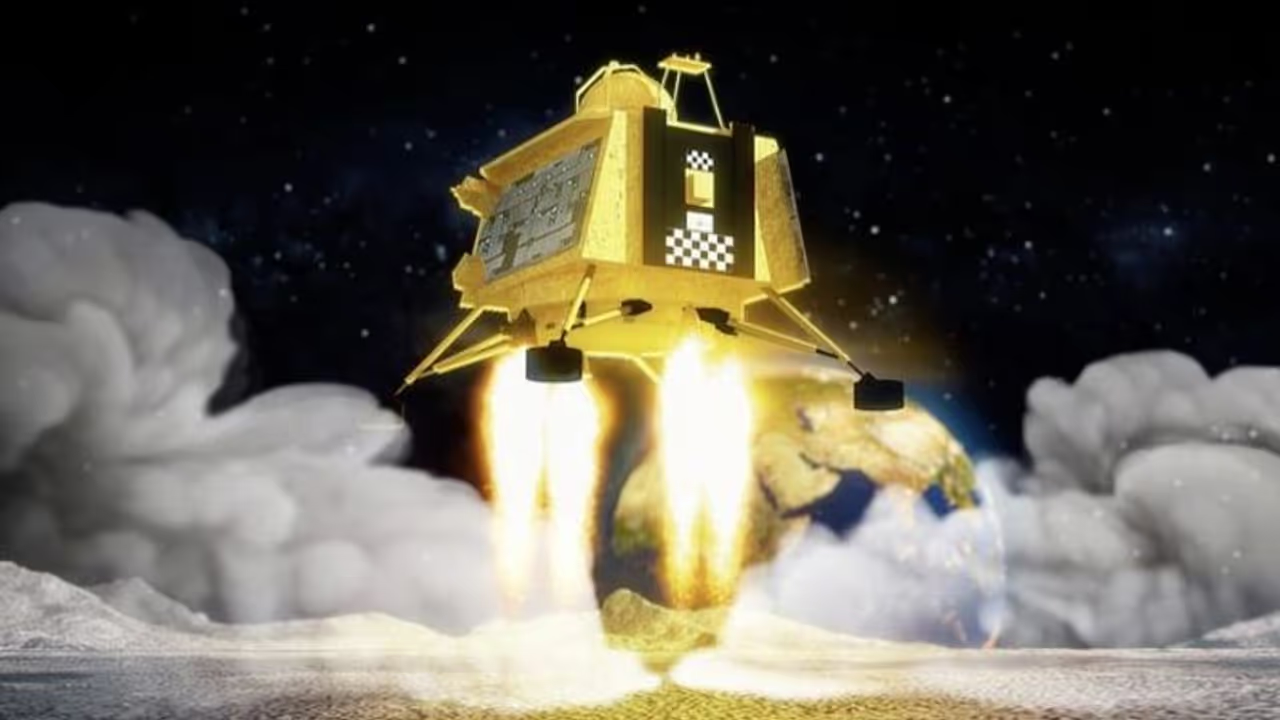The most crucial phase of this mission is the '17 Minutes of Terror,' during which the lander, Vikram, descends to the Moon's surface. The landing process involves a Rough Braking Phase, where the lander's horizontal flight is adjusted vertically, followed by a Fine Braking Phase for precise adjustments. Girish Linganna explains
Since entering the Moon’s orbit on August 5, Chandrayaan-3 -- launched from the Satish Dhawan Space Centre in Sriharikota on July 14, 2023 -- has been steadily lowering its orbit through a sequence of manoeuvres to align its position to a suitable altitude for a gentle landing in the lunar south pole region. As the entire world holds its breath, the spacecraft keeps advancing slowly towards its exploration of the Moon, treading its path steadily towards its planned lunar touchdown on August 23, 2023.

But the most significant -- and awe-inspiring -- moments in its entire journey are the last few nail-biting minutes, called the '17 Minutes of Terror'. But what exactly happens during those 17 minutes?
After separation from the Propulsion Module on August 17 and undergoing two separate deboosting procedures -- the second one was carried out at 2.00 pm (IST) on Sunday (August 20, 2023) -- the Lander Module, comprising the Vikram lander and Pragyan rover, successfully lowered its orbit to 113 km x 157 km and then veered itself into its closest orbit of the Moon.
The Vikram lander is now in orbit only 25 km away from its landing point on the Moon. As it tries to descend from this height to the Moon’s surface, its speed will be 1.68 kilometres per second, equivalent to approximately 6,048 km per hour.
Since the lander is on a horizontal flight, it must be slightly tilted vertically for landing. While on this descent, Vikram will slowly reduce its speed by firing all its engines. But its position relative to the Moon’s surface will still be horizontal.
This is called the ‘Rough Braking Phase’. It will typically last about 690 seconds, or about 11.5 minutes, covering nearly 713.5 km during this time. The speed will be reduced to 358 metres per second horizontally. Vertically it will be about 61 metres per second.
After some carefully executed manoeuvres, Vikram will then be brought to a vertical position relative to the Moon’s surface. This will mark the beginning of the ‘Fine Braking Phase’, where more accurate adjustments are carried out to control the descent.
This is where Chandrayaan-2’s mistakes began to pile up. Once this part was over, the lander had failed to keep in its intended position, lost control and crash-landed before reaching its destination. But, this time around, after carrying out precise analyses, ISRO has added some more sophisticated instruments to address these issues. It includes the images released by ISRO from Vikram’s camera. Other sensors also read and measure the area to calibrate the lander.
The speed will now be controlled and reduced to bring it to zero. It will happen in 175 seconds or about 3 minutes. Vikram will be completely vertical in this phase and hovering above the lunar surface, surveying the landing strip. The height can vary between 800 metres and 1,300 metres. The sensors will be again activated and recalibrated to check for height and velocity.
In the next phase, Vikram will be descending further and be brought down to 150 metres. The hazard detection camera will activate and take images to find uneven surfaces to check Vikram’s balance.
If it is on, Vikram will take another 73 seconds to descend 150 metres and gently land on the Moon’s surface. Its legs have been constructed in such a way that they can withstand a maximum impact of 3 m/second (roughly 10.8 km per hour).
If it is a ‘no-go’ situation, it can travel 150 metres and again use a hazard camera to choose a safe landing spot. As soon as the sensors on Vikram’s legs detect contact with the lunar surface, the engines shut down. This is a completely automated process, bringing to an end the nerve-wracking 17 minutes of uncertainty and waiting.
After landing, Vikran will switch on and communicate with the Chandrayaan-2 orbiter which is still gathering data in space. The lunar dust, known as regolith, will be allowed to settle down and the ramp will open after the solar batteries are charged. The Pragyan rover will roll out of Vikram and take images of the lander. It will transmit those images back to the lander, which will send it to India via the orbiter.
The stage is now set for extensive scientific experiments to begin. Both the Vikram lander and Pragyan rover run on solar energy and have been programmed to operate for one lunar day, equivalent to 14 Earth days.
